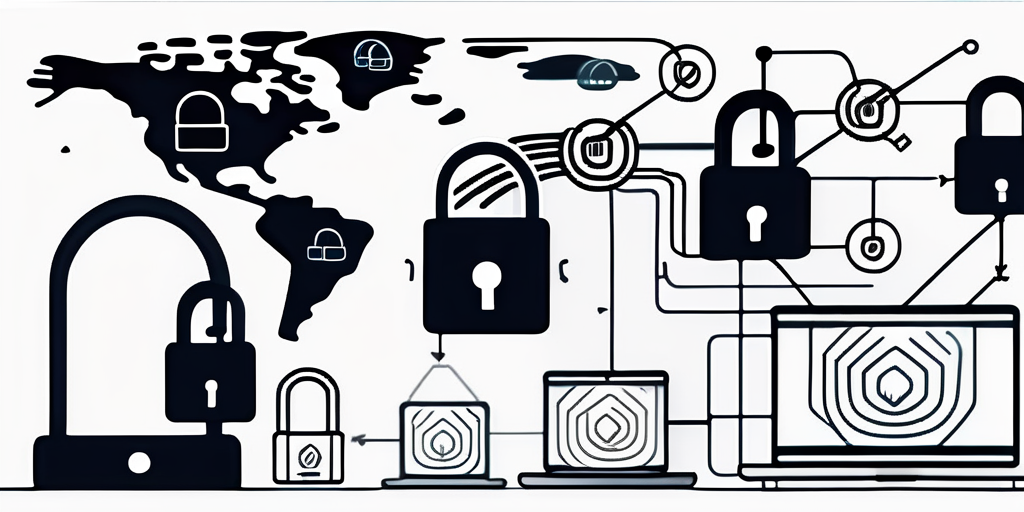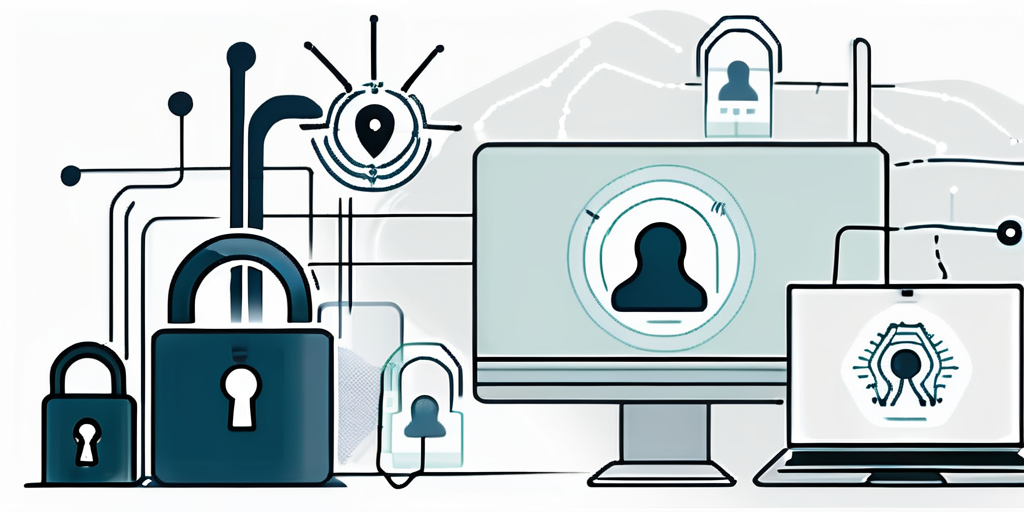Updated July 12, 2025
Penetration testing, also known as ethical hacking, is a crucial process for identifying and addressing computer system and network vulnerabilities. By simulating real-world attacks, penetration testers can identify weaknesses before malicious hackers exploit them. This article explores the different aspects involved in a penetration test, including the definition of penetration testing, its importance, the testing process itself, the various types of tests, and the role of ethical hackers.
Understanding Penetration Testing
Definition of Penetration Testing
Penetration testing, commonly known as pen testing, is a systematic approach to evaluating the security of a computer system, network, or web application. It involves simulating attacks to identify vulnerabilities that malicious hackers could potentially exploit. By conducting a pen test, organizations can proactively identify and address security weaknesses, enhance their security posture, and protect sensitive data from unauthorized access.

Penetration testing is a crucial component of a comprehensive cybersecurity strategy. It goes beyond traditional security measures, such as firewalls and antivirus software, by actively seeking out vulnerabilities that may be overlooked. This proactive approach allows organizations to stay one step ahead of cybercriminals and minimize the risk of a successful attack.
Ethical hackers, also known as penetration testers, employ various techniques to identify weaknesses in a system’s defenses during a pen test. They may scan for known vulnerabilities using automated tools, such as vulnerability scanners. Additionally, they may manually exploit vulnerabilities to gain unauthorized access to systems or sensitive data. The goal is to identify vulnerabilities before malicious hackers can exploit them, allowing organizations to patch or mitigate them before they can be exploited.
Importance of Penetration Testing
Cyber threats are becoming increasingly sophisticated and prevalent in today’s digital landscape. Companies of all sizes and industries risk falling victim to cyber attacks, resulting in significant financial losses, reputational damage, and legal consequences. Penetration testing is vital in mitigating these risks by identifying vulnerabilities and providing actionable recommendations to improve security.
Organizations can gain valuable insights into their security posture by conducting regular penetration tests. They can identify weaknesses in their systems, networks, and applications, and take appropriate measures to address them. This proactive approach helps organizations stay ahead of potential attackers and ensures that their security measures are current.
Penetration testing also helps organizations comply with industry regulations and standards. Many regulatory frameworks, such as the Payment Card Industry Data Security Standard (PCI DSS) and the Health Insurance Portability and Accountability Act (HIPAA), require regular security assessments, including penetration testing. By conducting these tests, organizations can demonstrate their commitment to security and ensure compliance with relevant regulations.
Penetration testing provides organizations with a realistic assessment of their security capabilities. It allows them to test their incident response procedures, evaluate the effectiveness of their security controls, and identify improvement areas. This information can be used to prioritize security investments and allocate resources effectively.
The Process of Penetration Testing
Penetration testing, also known as ethical hacking, is a systematic approach to assessing the security of a system or network. It involves simulating real-world attacks to identify vulnerabilities and weaknesses that malicious actors could exploit. The penetration testing process can be divided into several phases, each with its own objectives and activities.

Planning and Preparation
A successful penetration test begins with meticulous planning and preparation. This phase is crucial for ensuring that the test is conducted in a controlled and organized manner. The first step is to define the objectives of the test, which could include identifying vulnerabilities, assessing the effectiveness of security controls, or evaluating the organization’s response capabilities. Once the objectives are established, the penetration tester works with the organization to scope the test, determining the systems and networks that will be included and any limitations or constraints that need to be considered.
Another critical aspect of the planning phase is obtaining the necessary permissions from the organization. This ensures that the penetration tester has legal authorization to conduct the test and helps avoid potential legal or ethical issues. During this phase, the tester gathers information about the target system, such as its architecture, technologies used, and potential vulnerabilities. This information is essential for developing an effective testing strategy and selecting the appropriate tools and techniques.
Scanning and Discovery
Once the planning phase is complete, the penetration tester moves on to the scanning and discovery phase. This is where the actual testing begins. The tester uses specialized tools and techniques to scan the target system or network, looking for vulnerabilities and weaknesses. The goal is to comprehensively understand the system’s security posture and identify potential entry points for attacks.
During this phase, the tester identifies open ports, services running, and other network information that could be exploited. This information helps map the network and understand the system’s architecture. By identifying potential vulnerabilities, the tester can prioritize their efforts and focus on areas most likely to be exploited.
Gaining Access and Exploitation
Once vulnerabilities are identified, the penetration tester moves on to the next phase, which involves gaining unauthorized access to the system. In this phase, the tester attempts to exploit the identified vulnerabilities to bypass security controls and gain entry into the system. The goal is to simulate a real-world attack and demonstrate the potential impact of a successful breach.
During this phase, the tester may use various techniques, such as password cracking, privilege escalation, or exploiting misconfigurations, to gain access to the system. The tester may also exploit weaknesses in the system’s defenses, such as weak or outdated software, to gain a foothold. By successfully breaching the system, the tester can assess the effectiveness of existing security measures and identify any gaps or weaknesses that must be addressed.
Post-Exploitation and Analysis
After gaining access to the system, the penetration tester moves on to the post-exploitation and analysis phase. This is where the tester analyzes and documents the test’s findings. The objective is to understand the potential impact of the compromise and identify any additional vulnerabilities or misconfigurations that may have been overlooked.
During this phase, the tester examines the compromised system, looking for any sensitive data that may have been accessed or modified. The tester also assesses the potential impact of the compromise on the organization’s operations and reputation. This analysis helps understand the severity of the vulnerabilities and prioritize their remediation.
Based on the findings, the penetration tester prepares a comprehensive report that includes an executive summary, detailed technical findings, and recommendations for remediation. The report provides the organization with valuable insights into its security posture and helps prioritize and implement appropriate security measures.
Types of Penetration Tests
Penetration testing, also known as ethical hacking, is a crucial process in assessing an organization’s systems and infrastructure security. It involves simulating real-world attacks to identify vulnerabilities and weaknesses that malicious actors could exploit. There are several types of penetration tests, each focusing on different security aspects. Let’s explore some of the most common types:
Network Services Testing
Network services testing focuses on evaluating network infrastructure security, including routers, switches, firewalls, and other network devices. This type of testing aims to identify vulnerabilities in network configurations and potential weaknesses that may allow unauthorized access or compromise network integrity.
During network services testing, penetration testers employ various techniques to identify vulnerabilities. They may perform port scanning to identify open ports and services, conduct vulnerability scanning to detect known vulnerabilities, and attempt to exploit identified weaknesses to gain unauthorized access. Additionally, testers may analyze network traffic to identify potential security risks and assess the effectiveness of intrusion detection and prevention systems.
Web Application Testing
Web application testing assesses the security of web-based applications, focusing on potential vulnerabilities that may allow attackers to gain access to sensitive data or execute malicious code. This type of testing involves examining the application’s code, input validation, authentication mechanisms, and session management to identify potential weaknesses.
Penetration testers often use manual and automated techniques to identify vulnerabilities in web applications. They may employ tools like Burp Suite or OWASP ZAP to perform vulnerability scanning, conduct input validation testing to identify injection vulnerabilities, and test authentication mechanisms to detect weaknesses such as weak passwords or insecure session management.
Client-Side Testing
Client-side testing focuses on assessing the security of client systems, such as desktops and mobile devices. This type of testing aims to identify vulnerabilities in the client’s operating system, applications, and configurations that attackers could exploit to gain unauthorized access or compromise the client’s system.
During client-side testing, penetration testers may attempt to exploit vulnerabilities in the operating system or applications installed on the client’s system. They may also assess the effectiveness of security controls such as antivirus software, firewalls, and intrusion detection systems. Additionally, testers may analyze the client’s configuration settings to identify potential weaknesses that attackers could leverage.
Wireless Network Testing
Wireless network testing evaluates the security of wireless networks, including Wi-Fi networks and Bluetooth connections. This type of testing aims to identify vulnerabilities that may allow unauthorized access to the network, intercept sensitive data, or launch attacks against connected devices. It involves examining wireless encryption protocols, access points, and network configurations.
During wireless network testing, penetration testers may attempt to crack wireless encryption, such as WEP or WPA, to gain unauthorized access. They may also perform rogue access point testing to identify unauthorized access points that could be used to launch attacks. Additionally, testers may assess the effectiveness of wireless intrusion detection and prevention systems in detecting and responding to potential threats.
The Role of Ethical Hackers in Penetration Testing
Ethical hackers, also known as white hat hackers, are crucial in conducting penetration tests. These professionals possess a unique skill set, including a deep understanding of computer systems, programming languages, networking protocols, and various attack techniques. Additionally, they must know legal and ethical considerations related to hacking.

Penetration testing, or ethical hacking, is a proactive and legitimate approach to enhancing cybersecurity. It involves authorized individuals, ethical hackers, simulating real-world attacks to identify vulnerabilities in computer systems, networks, and web applications. They help organizations address these weaknesses and strengthen their security measures.
Skills Required for Ethical Hackers
Being an ethical hacker requires a wide range of skills and knowledge. These professionals must deeply understand computer systems and how they operate. They need to be proficient in programming languages such as Python, Java, or C++ and have a solid grasp of networking protocols like TCP/IP, DNS, and HTTP.
Ethical hackers must possess knowledge of various attack techniques, including but not limited to social engineering, phishing, SQL injection, cross-site scripting (XSS), and denial-of-service (DoS) attacks. This expertise allows them to think like malicious hackers and anticipate potential vulnerabilities.
However, technical skills alone are not enough. Ethical hackers must also have a strong understanding of legal and ethical considerations related to hacking. They need to be aware of the laws and regulations governing cybersecurity in their jurisdiction and ensure that their actions comply with the law.
Ethical Hacking vs. Malicious Hacking
It is essential to differentiate ethical hacking from malicious hacking. Ethical hackers operate within the boundaries of the law, with explicit permission from the organization, to identify and address vulnerabilities. Their actions are aimed at improving security and protecting systems and data.
Conversely, malicious hackers engage in illegal activities, seeking personal gain or causing harm. They exploit vulnerabilities without permission, often maliciously, such as stealing sensitive information, disrupting services, or spreading malware.
Ethical hacking is a proactive and legitimate approach to enhancing cybersecurity. It allows organizations to identify and address vulnerabilities before malicious hackers can exploit them. By simulating real-world attacks, ethical hackers help organizations strengthen their security measures and protect their valuable assets.
Conclusion
Penetration testing plays a critical role in ensuring the security and integrity of computer systems, networks, and web applications. By understanding the definition, importance, and process of penetration testing, organizations can effectively address vulnerabilities and protect themselves against potential cyber threats.
With various types of penetration tests available, including network services testing, web application testing, client-side testing, and wireless network testing, organizations can tailor their testing approaches to their specific security needs.
The involvement of ethical hackers, with their specialized skills and knowledge, further enhances the effectiveness of penetration testing efforts. By embracing ethical hacking practices, organizations can confidently safeguard their assets and protect against ever-evolving cyber threats.
Ready to take the next step in securing your organization’s digital assets? Blue Goat Cyber, a Veteran-Owned business, specializes in a range of B2B cybersecurity services tailored to your needs. From medical device cybersecurity to compliance with HIPAA, FDA, SOC 2, and PCI standards, our team is dedicated to safeguarding your business against cyber threats. Contact us today for cybersecurity help and partner with experts passionate about protecting your operations.
